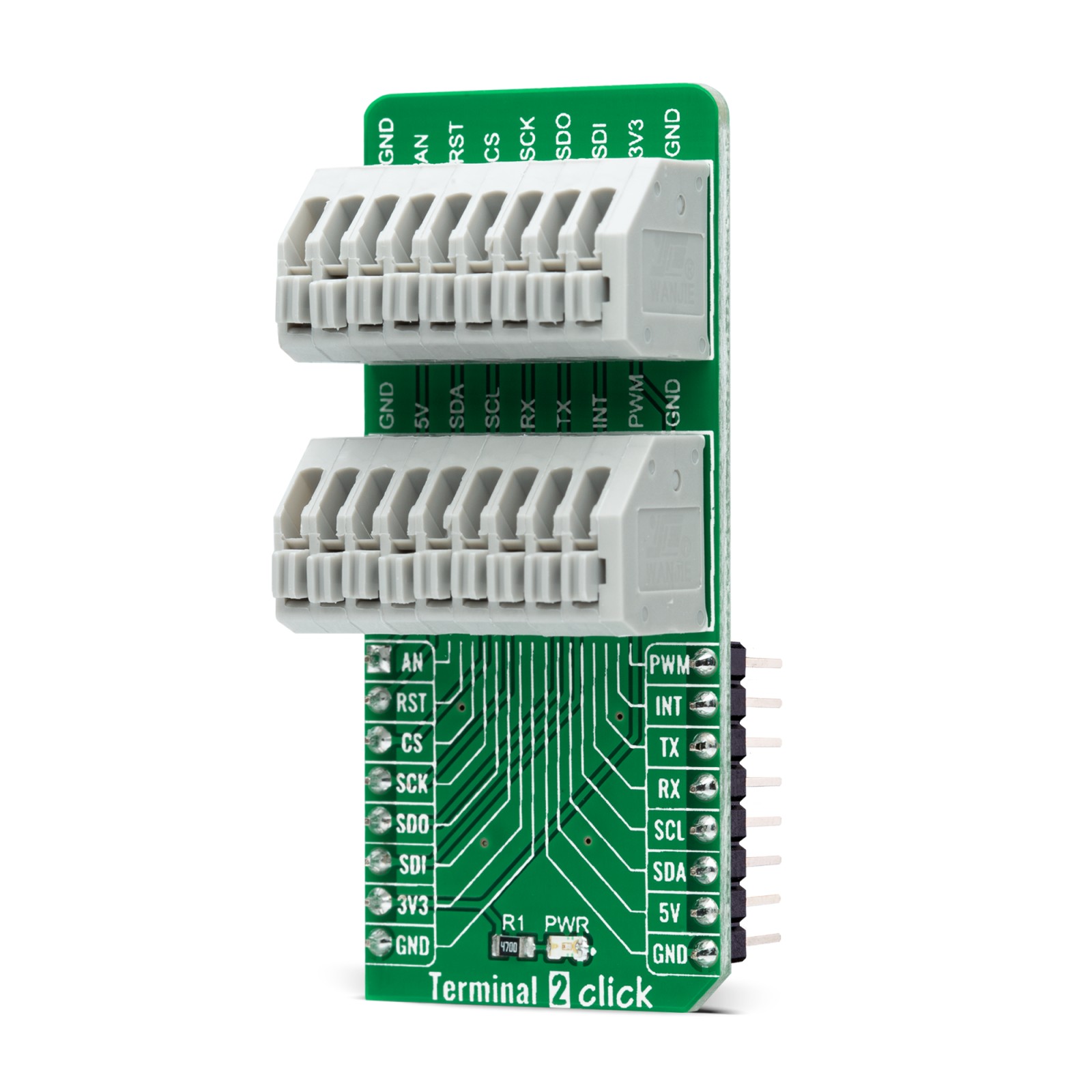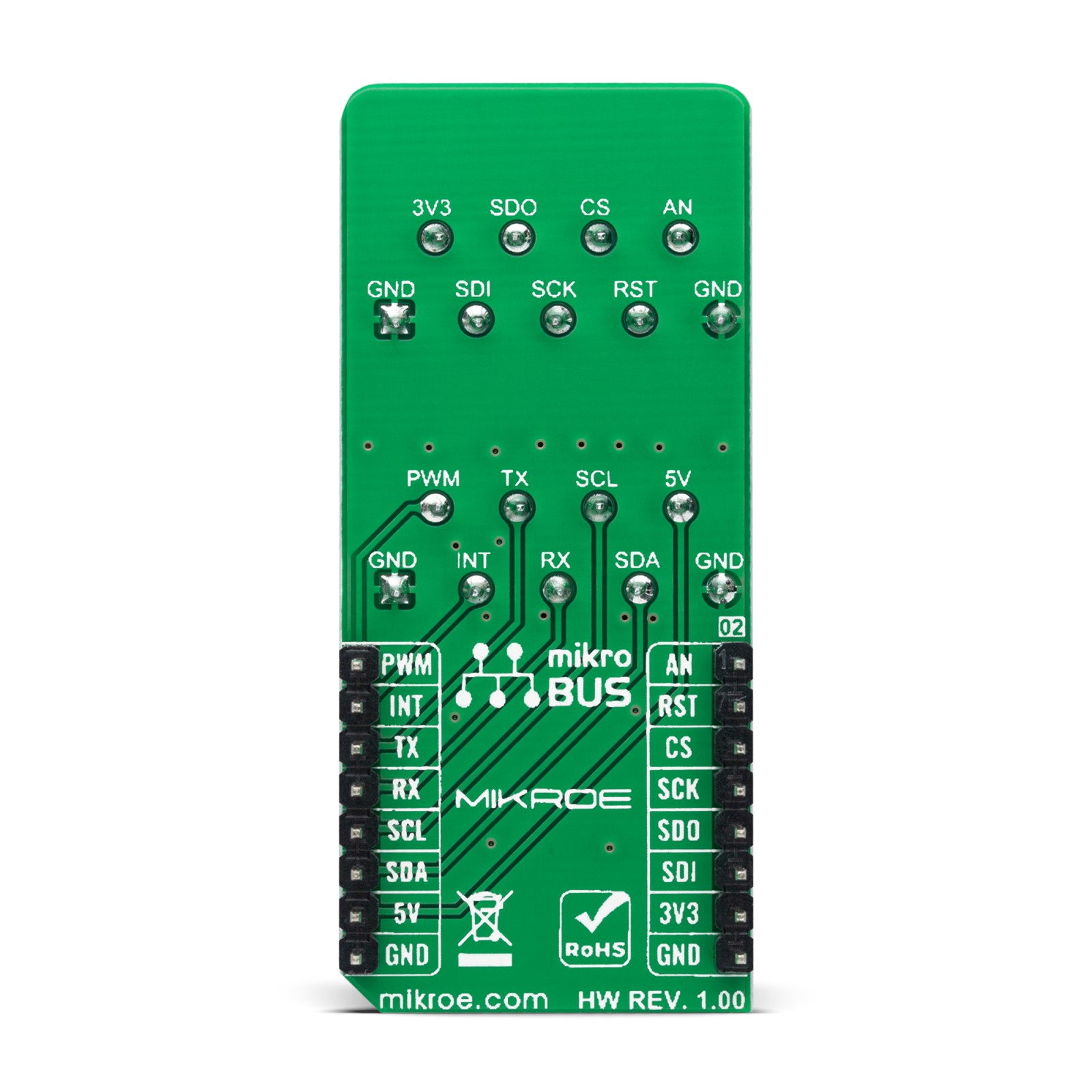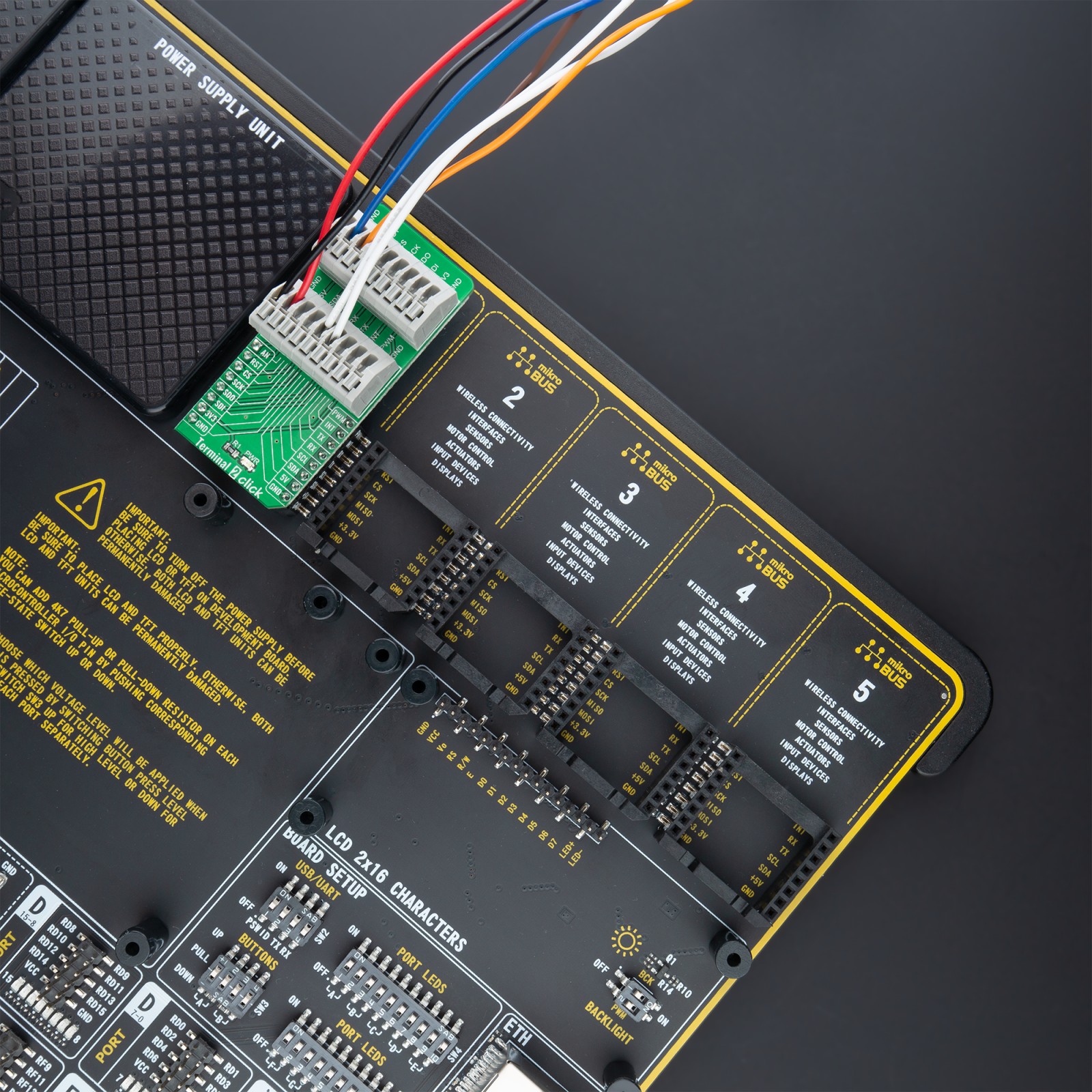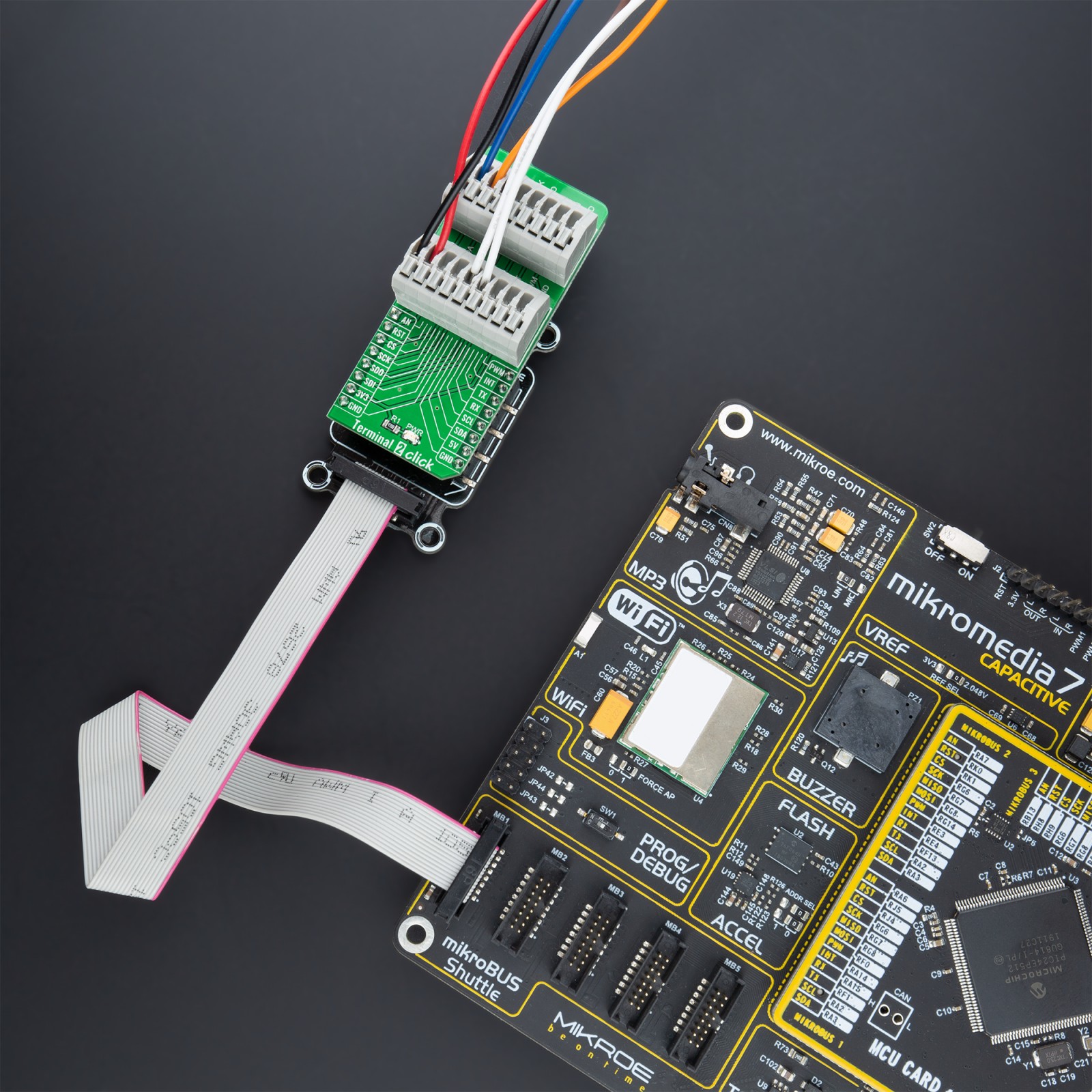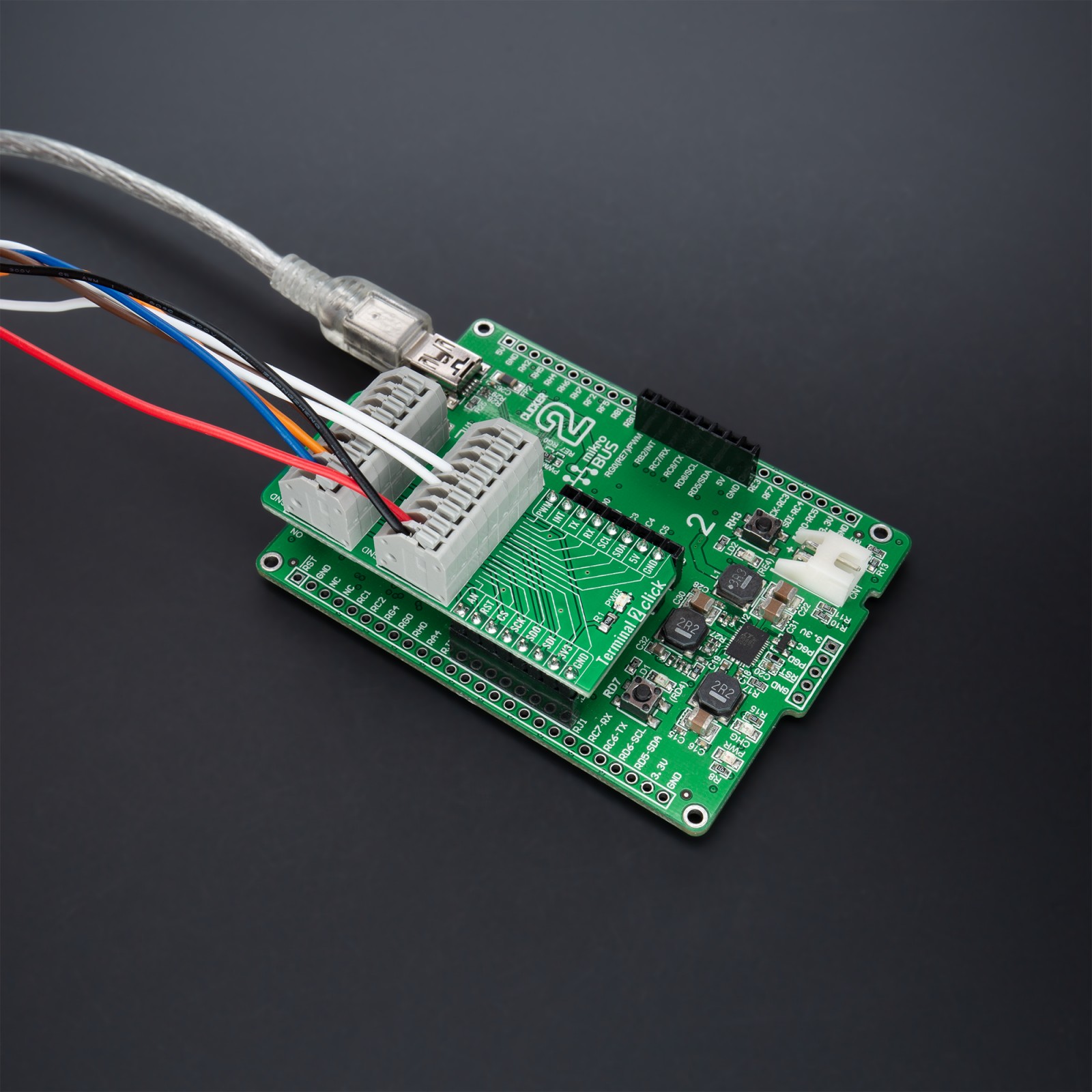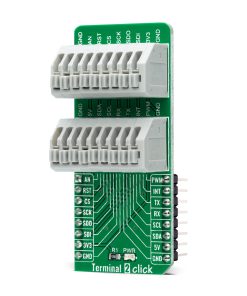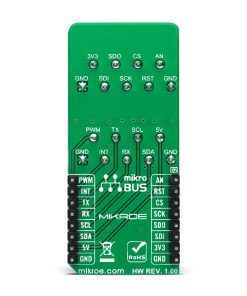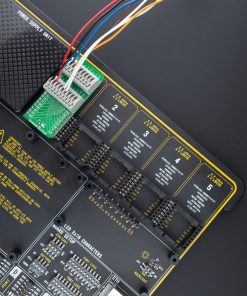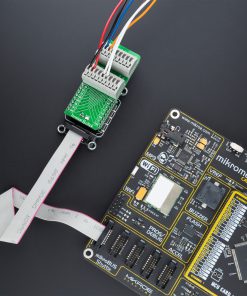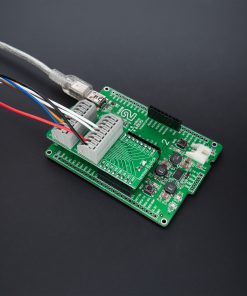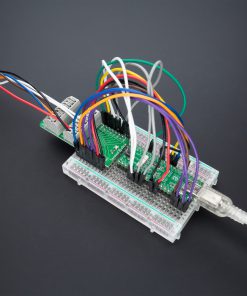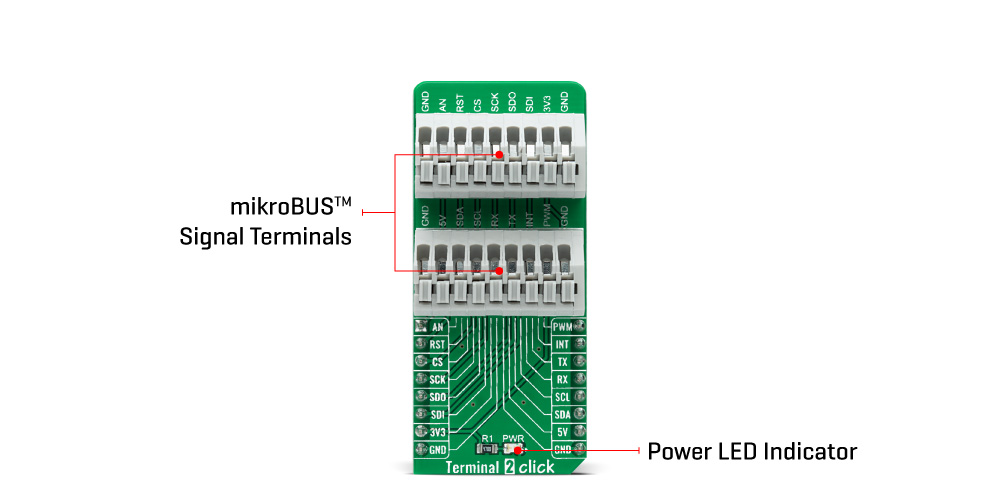Terminal 2 Click
R265.00 ex. VAT
Terminal 2 Click is an adapter Click board™ used as a mikroBUS™ socket expansion board. It provides an easy and elegant solution for adding the external connection capability to the Click board™, plugged on a mikroBUS™ socket. Featuring two 9-position 2.54mm pitch terminal blocks makes it an easy way to expand the development system’s connectivity with the mikroBUS™ socket while keeping the bus free to use with any Click board™.
Terminal 2 Click is supported by a mikroSDK compliant library, which includes functions that simplify software development. This Click board™ comes as a fully tested product, ready to be used on a system equipped with the mikroBUS™ socket.
Stock: Lead-time applicable.
| 5+ | R251.75 |
| 10+ | R238.50 |
| 15+ | R225.25 |
| 20+ | R216.77 |


